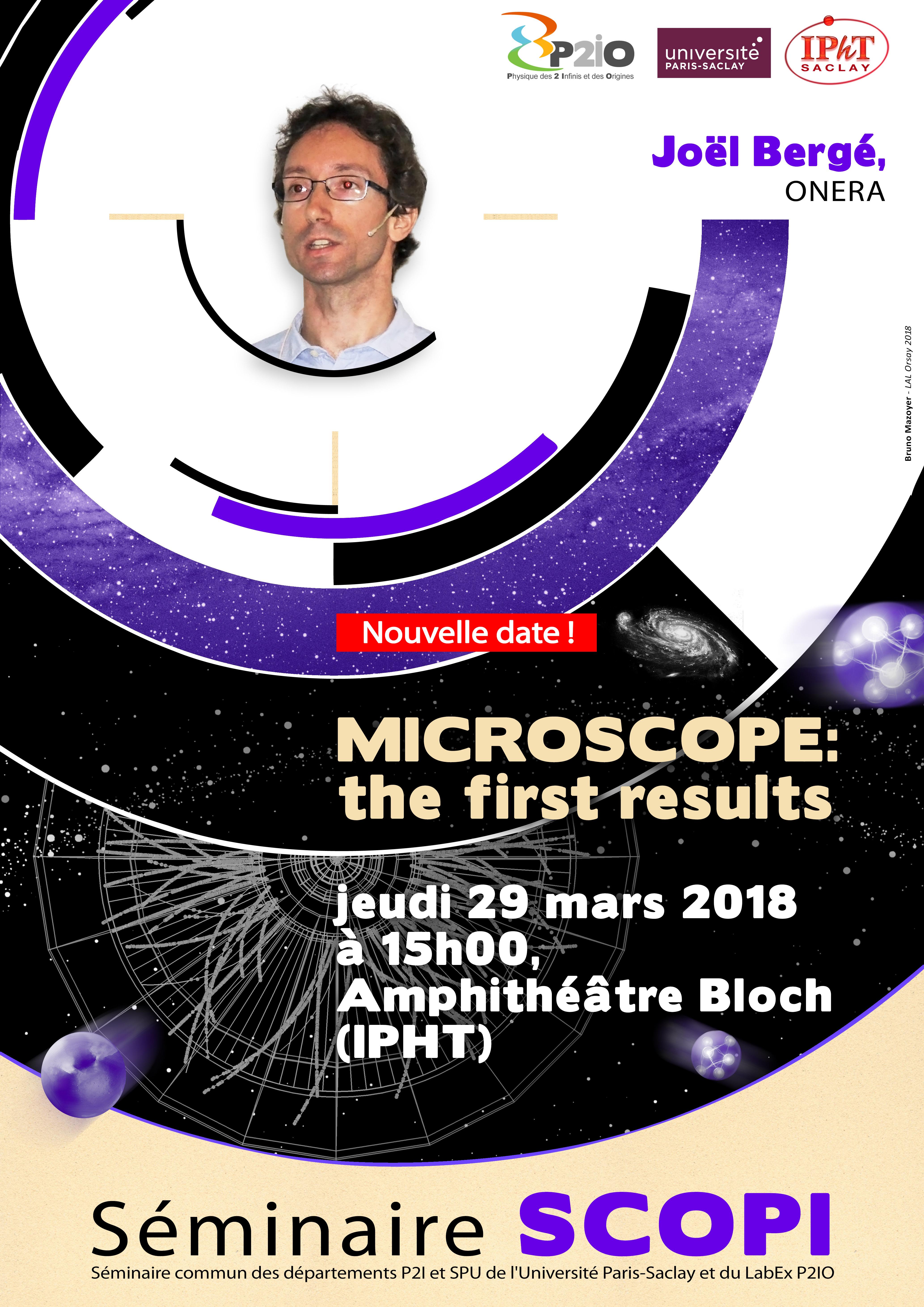MICROSCOPE is a CNES/ONERA space mission that aims to test the Weak Equivalence Principle (WEP) at the 10^-15 level, i.e. two orders of magnitude better than the best on-ground tests to date. The WEP is the cornerstone of General Relativity, the postulate that led Einstein to establish his theory: it states that all bodies fall at the same rate, independently of their mass and composition. Alternative theories of gravity, like those developed to overcome such conundrums as dark energy or the unification of gravity with the forces of the standard model of particle physics, generically predict a small violation of the WEP. As a consequence, not only does MICROSCOPE test the very foundation of General Relativity, but it also provides new constraints on theories beyond Einstein’s.
The MICROSCOPE satellite was launched on April 25, 2016. It has since then provided high-quality data. The first results (using only a small part of the total data) were announced last December, together with updated constraints on new long-range forces and on the characteristics of string theory’s dilaton. In this talk, I will first introduce the MICROSCOPE mission, in particular its scientific goals and measurement principles. I will then present the exploitation phase up to now. Finally, I will discuss its first results.


